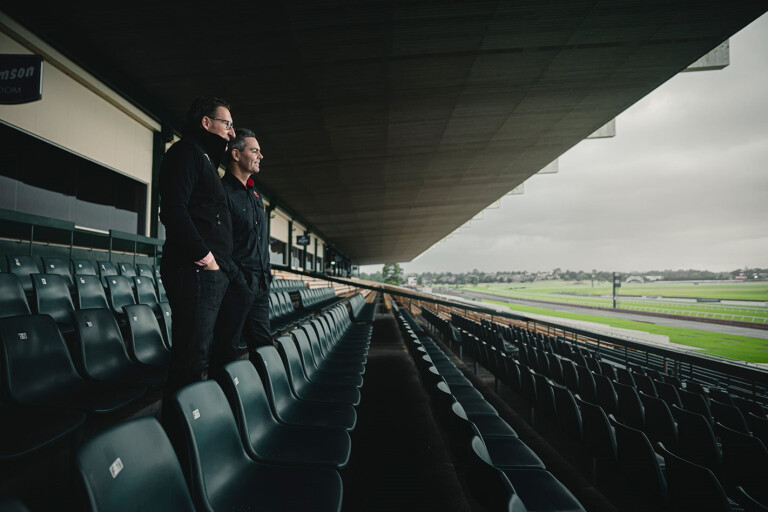
It’s a grey Friday morning at Melbourne’s Sandown International Raceway. Already, at 7:30am, the mowers are out trimming the lawns ahead of a coming horse race meeting. But we’re here to talk about a different kind of horsepower with Mark Skaife and Craig Lowndes, two true greats of Australia’s touring car and Supercars wars.
Sitting here in the famous main straight grandstand they do what motor racing people tend to do when they get together. They remember.
“One of my most vivid memories of this place is when Fangio did the exhibition that time,” Skaife says. “I was standing in the pit area and he came out of turn one sideways fully gassed up. It was brilliant!”
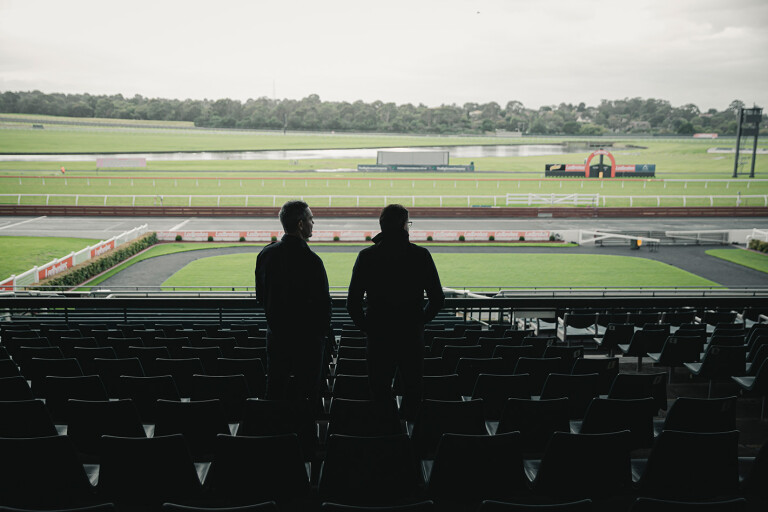
Skaife cracks that crooked smile, then laughs in that distinctive giggling way of his. He has such a serious, intense persona that it comes as a shock when you hear it. Lowndes, well he’s smiling and laughing too. No surprise there. The most popular driver in Supercars is renowned for his cheer, even though it camouflages a deeply competitive instinct.
Skaife, 52, made his touring car debut here in 1987 in a 2.0-litre Nissan Gazelle and won his class. Lowndes, 45, debuted here in 1994 in a Holden Racing Team Commodore, which he shared with Brad Jones to finish fifth outright.
“I knew my way around here really well because I was doing a lot of driving instructor work and doing lots of laps in road cars,” Lowndes says. A few weeks later at Bathurst he passed John Bowe for the lead late in the race and a star was born.
We’re not only here for a happy steer down memory lane though. Our subject is the demise of Holden. As much as that impacts almost everyone in Australia in some way, its departure won’t be felt anywhere more keenly than in our most important motorsport category.
Ever since the first one was made in 1948, Holdens have been raced. Since 1969 the company has continuously been involved in touring car racing directly or indirectly. No other brand – not even greatest rival Ford – can boast that connection to the category, that much influence or that much return from the many millions it invested.
The immortal cars: Monaros, Toranas, Commodores. The legendary drivers: Brock, Skaife, Lowndes, Whincup, Perkins, Tander, Murphy, van Gisbergen, Richards, Harvey, Morris, Grice. The great bosses: Firth, Sheppard, Gibson, Walkinshaw, Crennan, Dane.
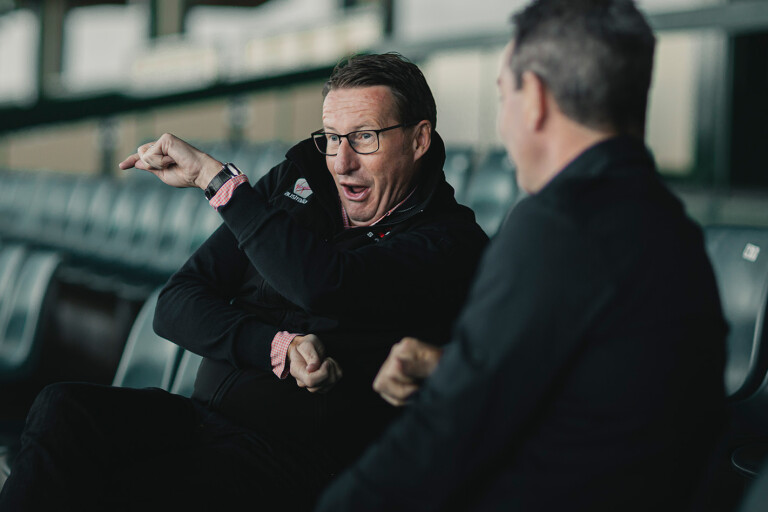
Holden’s success is written large in the record books; more Bathurst wins, more drivers’ championships, more of just about everything. But, from 2021, nothing.
“I was shocked,” Lowndes admits. “We knew the Commodore was going to be phased out, but I didn’t think a brand like Holden would leave the shores of Australia.”
Adds Skaife: “The vividness and harshness of that decision... Bang! Holden gone. I don’t think anyone in Australia ever really thought that Holden, as an iconic ingrained brand, would ever not be part of our psyche.
“There’s this family, cultural heartland DNA about Holden that embodies Australia. The power of a decision to say ‘that’s not part of us anymore’ is a really powerful, emotional thing.”
When Holden was last at its peak in the late 1990s and early 2000s, selling nearly 100,000 Commodores annually and leading the market, Lowndes and then Skaife were dominating the circuits of Australia in their Holden Racing Team Commodores. They were the two best drivers in the two best cars, Australia’s equivalent of the Ferrari Formula 1 team, and they were followed by an equally fanatical ‘Team Red’ support base. Apart from the great Peter Brock, no Holden driver has ever been more feted or recognised than these two.
Those were the days when Holden and Ford were each tipping about $15 million into the category each year. Drivers’ salaries were headed for the $1 million per annum mark, they flew at the front of the plane, and they stayed at five-star hotels.
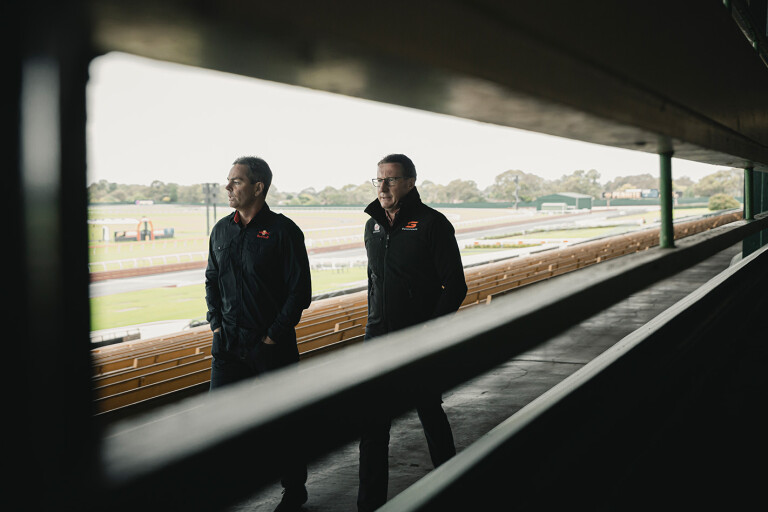
HRT and its sister teams were based just down the road from Sandown, in the south-eastern Melbourne suburb of Clayton, alongside the HSV high-performance road car business.
It was a virtuous circle of promotion for Holden, HSV and HRT.
“We’d have open days in Clayton at HRT and up to 30,000 people would show up,” remembers Lowndes.
“It was unbelievable, career-defining,” adds Skaife. “When you think about Holden and their consistency of messaging, from their Monaro days in the late 1960s right through to the factory team as HRT, those days were profound.
“The factory team status means everyone owns it. The dealers think it’s theirs, the Holden factory thinks it’s theirs, the workers at the factory think it’s theirs, anyone who owns a Holden thinks it’s theirs. There’s this incredible level of patronage and support that comes as a factory team.”
In that era from 1996 to 2002, Lowndes, Skaife and HRT won three Bathurst 1000s and six drivers’ championships in seven years.
But Lowndes and Skaife also experienced the dark side of the factory glory story.
Lowndes created national headlines, even triggered death threats, when he split from Holden in 2000 and went to Ford. He was in the wilderness until he settled with Roland Dane’s Triple Eight squad. Eventually he would become a Holden factory driver once more. He’s still co-driving, Brock’s record nine Bathurst wins now just two away.
“Moving to Triple Eight extended my career,” Lowndes says. “If we didn’t come back to Holden and have some success, I think my career would have ended earlier.”
Skaife became the owner of HRT in 2003 after Tom Walkinshaw’s TWR business went broke. By 2008 he had sold it back to Walkinshaw and by the end of the same year he had retired from full-time driving.
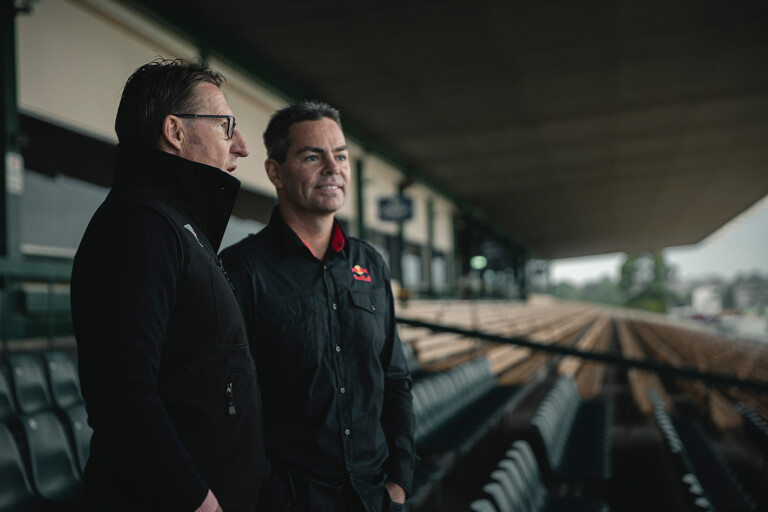
Skaife got a blunt lesson in the politics, the multimillion-dollar costs, the ruthlessness of it all. Supercars is a hard-nosed business most of the week and a sport for only a few hours each weekend. Holden was not immune to this.
“If I had my choice, I would do it again,” Skaife insists. “But it did take the fun out of it for me and in a weird way it probably did shorten my full-time racing career because the demands around it were pretty intense.”
Skaife is more forensic about Holden’s rise and decline. It is his way. He’s always worked the room, networked, enjoyed the off-track powerplays and the rewards these carefully cultivated personal relationships deliver. Skaife gave Holden many fabulous wins and a lot of promotional tools, but he also got a lot back in terms of understanding how big business – especially the automotive business – works.
“One of the things we miss in this whole debate about the local car industry and what’s actually involved, so much of it is just about people,” he says. “They make such a difference. It’s not necessarily what the factory means. If you have a dud managing director at the time, it’s not that great.”
To back up his point, Skaife recounts the story of his first meeting with Holden’s then marketing chief, the late Rob McEniry, when Gibson Motorsport was tossing up its post-Nissan future in 1992.
“I wanted to go with Holden just because of Rob. He was this powerful, all-encompassing, massively motivated, incredibly clever, absolute car bloke.”
And it wasn’t only McEniry. Other Holden executives such as sales and marketing director Ross McKenzie and MDs including Peter Hanenberger were fierce competitors who relished beating Ford as much on the racetrack as in the sales charts.

When Lowndes shifted to Ford he found the different culture remarkable.
“Holden was more of a go-getter. They would just go and do something, do an activation or something, and hopefully get a reward from it. Whereas Ford would do the research and development to see what they could get from it, and by the time that had come back it had already moved on.
“That was a real eye-opener for me. Ford was really conservative, whereas Holden was blazing through like a bulldozer and trying to create and control everything.”
But in more recent times – as Commodore sales waned, as the factory closed, as it searched for a new identity and as one MD after another revolved through the corner office – Holden even considered withdrawing from racing altogether.
It didn’t, but the factory investment, reduced to no more than a couple of million dollars, was stripped from Clayton and awarded solely to Triple Eight in Brisbane. Instead of being integral to Holden, racing was merely an add-on.
Ford did pull out for a few years – as it did a number of times over the decades – although it is back in now. Who would have thought it would be last man standing in the Australian touring car war?
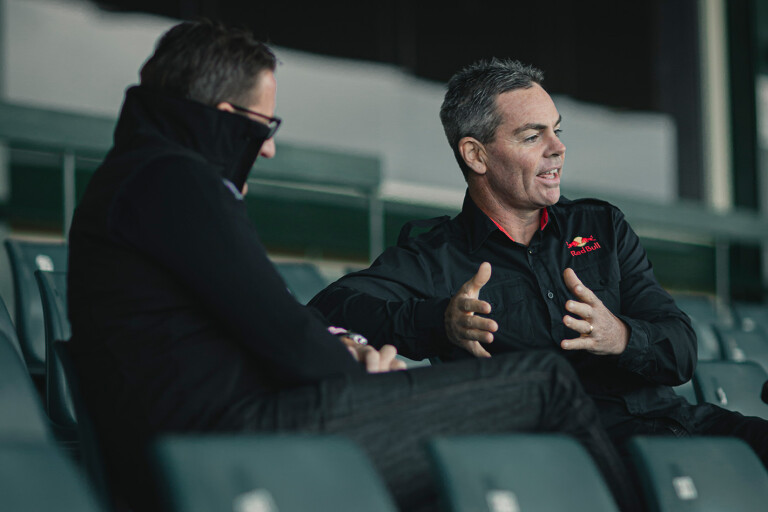
As far as Lowndes and Skaife are concerned, the Supercars fan base is still tribal. Sure it’s been diluted by drivers and teams changing loyalties, but the fan reaction they encountered at the opening 2020 Supercars event in Adelaide was stark.
“It’s still red and blue out there,” Lowndes says. “You go out in the crowd and there’s no doubt about that.”
Skaife agrees: “I had people coming up in tears. ‘What are we going to do? Who are we going to go for? I just bought a car.’ ”
So what happens now? A foundation stone of Australian racing has been wrenched away. What will the impact of Holden’s departure be?
“The category will evolve,” Lowndes insists. “I remember watching a film of Minis and Cortinas running around, then it became Group A and the Godzilla era with turbos and four-wheel drive. Since then we’ve gone full circle back to V8s with rear-wheel drive.
“Not that long ago there were five manufacturers and this year we are back to two. The category will evolve and we just have to keep it an entertaining package and make sure other manufacturers are tempted into the sport.”
Skaife argues Supercars will survive because it has become more popular in an era where Holden’s market share has declined.

“Our television audience has gone up, our attendances have gone up, our government support has increased. The metrics, the business itself, is very strong and robust. It makes good money.
“My single thing is you have got to take those Holden fans on the journey with you. It’s much easier to keep a current customer than it is to find a new one.
“So take those people on the journey, and hopefully GM has got a product you can do that with.”
He’s talking about the Chev Camaro coupe. If the new Gen3 technical rules can be finalised in time, its introduction could happen as soon as 2021.
The timing is loaded with historical significance. In 1971 Bob Jane won at Sandown, starting from pole in front of this very grandstand on his way to the 1971 ATCC in a Camaro ZL1. Reintroducing the Camaro to Australia’s premier series 50 years on from such a landmark moment would invoke a certain symmetry.
Skaife motions to the empty seats around him as he makes his final point. Whatever replaces Holden, the essentials of the Supercars show must be retained.
“Sit right here and watch these things blaze past and people go ‘wow!’ It’s wow, the DNA of what we have got is wow. And that’s what is really important about the next generation of cars.”

RED-BLOODED RIVALRY
The connection to Holden for Skaife and Lowndes runs deeper and earlier than their tin-top racing days.
Craig’s father, Frank, worked for Brock at the Holden Dealer Team and the young Lowndes spent his childhood scampering around the pits at places like Sandown. At age 19 in 1994 he was testing for HRT, by 1996 he was locked in alongside Brock with a full-time drive. That year he swept the triple crown – the championship, Sandown 500 and Bathurst 1000 – a 22-year-old thinking about nothing else but going fast.
“The development of the car back then was just unbelievable and it was basically, whatever you wanted to dream up they would create,” Lowndes recalls.
Skaife also grew up around Holdens: his grandfather religiously purchased Holden utes for his tyre businesses; father Russell’s first race car was a Torana XU-1; his own first car was a WB ute; and his first race car was an XU-1. Skaife came to prominence in a Ford Laser and joined the factory Nissan team, but he was back in a Holden from 1993. Skaife won Bathurst that year with Jim Richards and in 1994 delivered Holden’s first touring car title since Brock in 1980. He moved to HRT full-time in 1998 to drive alongside – and against – Lowndes.
“On each side of the garage there was an incredible intent to win, which kept driving the whole thing the whole time,” says Skaife, whose arrival at HRT was one of the reasons Lowndes eventually left for Ford.
Lowndes and Skaife reunited at Triple Eight to win the Bathurst 1000 in 2010. Today, they commentate together on Supercars for Fox Sports.

Get to know Mark Skaife
- Age: 52
- Born: Central Coast, NSW
- Lives: Melbourne, Vic
- ATCC/Supercars championship wins: 5
- Bathurst 1000 victories: 6
Favourite Holden race car: 2001 Holden Commodore VX (and later a VY). Known as the Golden Child, Skaife won two Supercars championships and two Bathurst 1000s in this car. “A couple of Clipsals, a couple of Bathursts, a couple of championships... a pretty cool car.”
Best Holden race: 2000 Clipsal 500 Leg 2. Last-to-first in the wet started Skaife’s drive to his first championship with HRT. “It was a pretty wild day. It was raining all day and I think there were 38 cars on the grid. It was a good race and I was having a great battle with Craig through the course of it. I got a drive-through penalty as well that day, so put that down as one of my best wins.”

Get to know Craig Lowndes
- Age: 45
- Born: Melbourne, Vic
- Lives: Brisbane, Qld
- ATCC/Supercars championship wins: 3
- Bathurst 1000 victories: 7
Favourite Holden race car: 1996 Holden Commodore VR. He raced two VR Commodores in 1996 on his way to winning the Australian Touring Car Championship, the Sandown 500 and Bathurst 1000 (co-driver, Greg Murphy). “I loved the era. You had tyre development, suspension development, engine development – back then it was like an open book.”
Best Holden race: 2010 Bathurst 1000. Lowndes drove a huge 79-lap stint to lead home a Triple Eight 1-2 after co-driver Skaife suffered a back injury mid-race. “That was one of the biggest challenges mentally, just to keep going for each stint.”
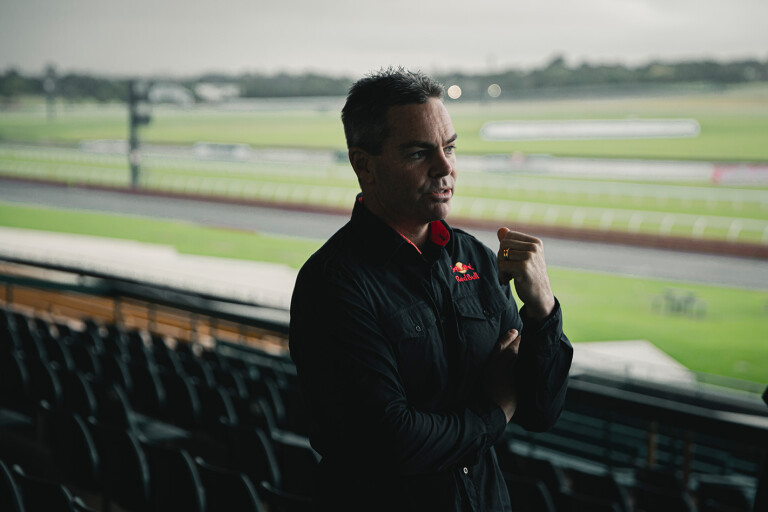

COMMENTS